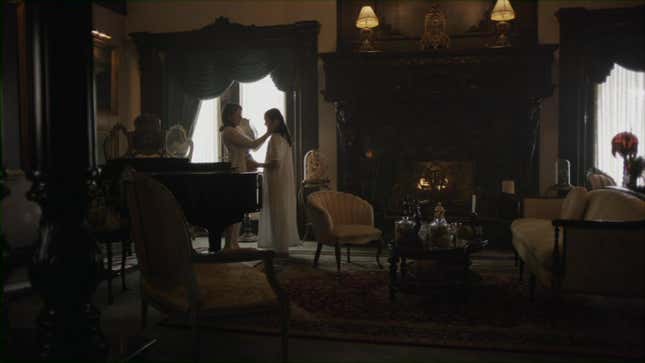Jezebel's Summer of Bad Books Club: What Does 'Time' Mean Anyway?
In Depth

Megan Reynolds: Last week, my partner-in-crime Emily Alford expounded beautifully on how My Sweet Audrina is an entry in the canon of the female Gothic novel, sitting alongside works like Daphne du Maurier’s Rebecca but meant for teenagers and not adult women. Perhaps that explains why MSA traffics in such high melodrama, but I’m willing to chalk that up to the genre. What I am not willing to let rest, however, is the issue of time and how it operates in Whitefern.
Truthfully, the responsibility for picking the subject of this week’s book club discussion filled me with the same sort of dread that I have experienced in other, real-life book clubs, but thankfully the subject I have selected is one that is very important and also highly apparent. Time is nebulous in Whitefern; it marches forward regardless. But the way that our sweet Audrina experiences the passage of time doesn’t make sense!
Audrina struggles with time, simply because her father has kept her in the dark and any questions she might have about how old she is or what month it is are skillfully elided. Her confusion isn’t because there’s a discrepancy in what her father is telling her; it is simply because, in the eyes of her monstrous father, she cannot be trusted with this information. Audrina’s memory is faulty, so much so that she begins keeping a diary so that she might try to remember anything concrete about her life at all. Living as she does, in that sepulchral home, in the shadow of the first Audrina’s memory, current Audrina exists as if trapped in amber at an indeterminate age, either seven years old or, I’m guessing, roughly 14? As a narrative device, fucking with time in the way that MSA does lends an ominous air to the proceedings, though it is a bit heavy-handed. Consider this passage about Mercy Marie, the older sister of Lucietta and Ellsbeth, who is not alive, as I previously thought, but is dead? I think? When our sweet Audrina inquires as to when the last time she saw Mercy Marie alive, Papa embraces her in his greasy little arms and says:
-

-

-

-

-

-

-

-

-

-

-

-

-

-

-

-

-

-

-

-

-

-

-

-

-

-

-

-

-

-

-

-

-

-

-

-

-

-

-

-








































